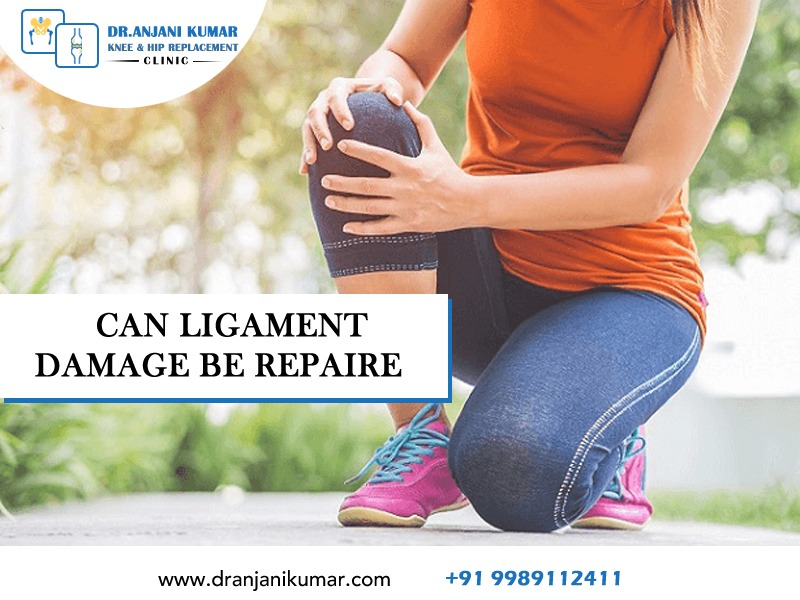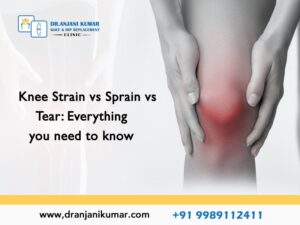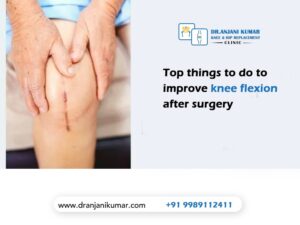Ligament damage can be temporary or severe, requiring surgical intervention. Conservative treatments like rest, ice, compression, elevation (RICE), pain management, and physical therapy can help heal injuries. Surgical intervention may be necessary for severe or complete tears, but techniques like suturing or grafting can restore joint stability. Following surgery, a rehabilitation program is prescribed to optimize recovery. The healing process can take time, so following treatment plans and protocols and allowing the ligament sufficient time to heal is essential. Strength and stability training is crucial for restoring joint function and reducing re-injury risk.
Common treatment options for ligament damage:
Treatment for ligament damage depends on severity and location, requiring a specific treatment approach.
Conservative management: Mild ligament injuries can be managed conservatively without surgery through rest, ice, compression, elevation (RICE), pain management, and physical therapy to promote healing, reduce swelling, and restore joint function.
Surgical repair: Severe ligament tears or complete ruptures require surgical intervention for immediate stability. This repair involves suturing the torn ends using specialized techniques or devices, especially for ligaments crucial for joint stability or when conservative treatments have not yielded satisfactory results.
Ligament reconstruction: Ligament reconstruction is a surgical procedure where a graft from another part of the body replaces a damaged ligament. The graft is secured and integrated into the joint, providing long-term stability.
Rehabilitation and physical therapy: Rehabilitation and physical therapy are essential for joint recovery, restoring strength, flexibility, and range of motion. These programs are tailored to individual needs and gradually progress to functional activities and sport-specific training.
A healthcare professional, like an orthopaedic specialist, determines the treatment approach for a ligament injury based on factors like severity, joint involvement, patient goals, and overall health. Consulting with a qualified provider is crucial for selecting the most appropriate treatment option.
Causes and reasons for ligament damage:
Ligament injuries arise from various causes, including common factors like sprains and strains.
Common factors contributing to ligament injury:
Trauma or accident: Ligament injuries result from sudden impacts or accidents, such as falls, direct blows, sports collisions, or car accidents, causing joint damage.
Sports injuries: Certain sports activities, like soccer, basketball, football, skiing, and tennis, increase the risk of ligament injuries due to rapid changes, jumping, and contact with other players.
Overuse or repetitive strain: Overuse or repetitive strain on joints can cause ligament damage, as repetitive motions and excessive loading weaken ligaments, increasing their risk of injury.
Incorrect body mechanics or technique: Ligament injuries can result from poor body mechanics, improper technique, or inadequate training—incorrect form, improper landing, sudden direction changes, and inadequate warm-up increase the risk of damage.
Ageing and degeneration: Ligaments are age-related degenerative changes, causing loss of flexibility, elasticity, and weakness, increasing injury susceptibility and affecting other tissues.
Pre-existing joint instability: Pre-existing joint instability, laxity, or previous ligament injuries increase the risk of re-injury or new injuries.
Genetic factors: Individuals may have a genetic predisposition to ligament injuries due to inherited conditions affecting their strength and integrity.
Ligament injuries are common in ankles, knees, and wrists. Prevention strategies include proper warm-up, conditioning exercises, protective gear, technique, and body listening to reduce the risk.
Ligament damage impacts daily routines:
Ligament damage impacts daily activities, depending on injury severity and the joint involved.
- Pain and discomfort: Ligament injuries impact weight-bearing joints, causing pain and difficulty.
- Reduced mobility and range of motion: Ligament damage restricts joint mobility, impacting activities like walking, reaching, and bending.
- Impaired weight-bearing abilities: Ligament injuries impact weight-bearing joints, causing pain and difficulty.
- Fine motor skills are affected: Ligament injuries impact fine motor skills, making tasks challenging.
- Impact on sports and recreational activities: Ligament injuries impact sports activities, requiring recovery modifications.
- Difficulties in personal care: Ligament injury location may cause challenges in personal care activities.
- Impact on work or daily occupations: Ligament damage impacts physical demands, causing job responsibilities limitations.
Is the ligament damage permanent?
Ligament damage can be healed and regain function with proper treatment and rehabilitation. The body can repair and regenerate damaged ligament tissues over time. Recovery depends on injury severity, location, treatment approach, and individual healing capabilities. Mild to moderate injuries can be healed with rest and physical therapy. Severe injuries or complete tears may require surgical intervention to restore joint stability, such as suturing or using grafts.
Surgical intervention may be necessary to repair or reconstruct the damaged ligament in severe or complete ligament tears. Techniques like suturing or grafting can restore joint stability.
About Dr Anjani Kumar
As an orthopaedic surgeon in Hyderabad, I try to provide patients with as many options as possible for hip and knee treatments to help each patient have the greatest results. I carefully consider the specific sorts of injuries and need to be comfortable offering a specialised solution before recommending the best course of therapy for each patient. My patients’ enhanced mobility and pain reduction are always my top priorities, as these will enable them to resume an active lifestyle. In more severe cases, especially when the joint has collapsed, or the bone has suffered extensive deformation, knee replacement surgery may be advised.
Knee replacement surgery may be recommended in advanced cases, especially if the joint has collapsed or the bone has become severely deformed.
Dr Anjani Kumar has 20 years of experience and successfully performed 2000 knee replacement surgeries, 350 hip replacement surgeries, and 500 pelvic acetabular surgeries throughout his career. Please get in touch with us on Mobile: at +91 9989112411 and by E-mail: anjanikumar@ gmail.com




